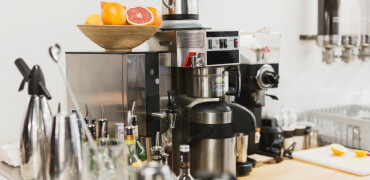In the past, mixing and kneading dough for bread or cake used to be an arduous task for most cooks. Thankfully, things have changed with the arrival of electric mixers that do the job in far less time and require virtually no manual effort during the mixing stage. Electric mixers generally come in two models - benchtop or handheld.
There are many mixers on the market but choosing the right one that is fit for the purpose may require a little bit of guidance.Do You Need a Heavyweight or a Lightweight Mixer?
A benchtop mixer usually has a base that is motorized and a top that holds beaters in place inside a bowl, with a motor strong enough to knead dough to be used for all types of baking. These types of mixers may also have accessories that will permit the making of ice cream or meat for sausages. They are also referred to as commercial mixers. Due to their heavy weight, they will usually not be moved about so much, and may occupy a permanent spot in a kitchen.
Handheld mixers are significantly smaller and lighter, with a smaller motor and blades. They are suitable for mixing smaller quantities of light dough, beating eggs and for whipping cream etc.
Depending on the situation, some home cooks will use benchtop mixers and handheld mixers to suit their different cooking requirements.
Multi-Function Mixers
Although it's possible to have separate machines that will carry out different tasks like opening a can, crushing ice and straining vegetables - all these functions can be achieved in a multi-function benchtop mixer. Buying a multifunction mixer will not only permit you to buy an all-in-one machine, but it will also occupy a lot less space in your kitchen. Depending on the kind of multifunction mixer being bought, the attachments may differ.
Head Design
Most mixers have heads that can be tilted into the bowl when in use. Other mixers have bowls that can be lifted up to meet the head.
Mixer Size
The different mixers will come with a range of bowl sizes with the average being 5 litres. The choice of bowl size is based on the amount of dough mixing that will be done. If you're going to need a lot of dough for baking, then bigger size bowls are better. Note that the 5 litre bowls are fine for home use while for commercial use, bowls of up to 50 litres are used. If you choose to use a benchtop model, you may like to select one that matches the décor of your kitchen.
Mixing Action
The way the dough is mixed will vary depending on whether a mixer is spiral or planetary. In spiral mixers, the bowl rotates while a spiral-shaped agitator rotates. This type of mixing enables even mixing of a batch of dough in the shortest possible time. This type of mixer will not be suitable for tasks like egg- whisking but is best suited for mixing the dough. Since this mixer mixes dough without causing an increase in temperature, the dough can rise properly. Also, if mixing larger batches, there's no need to change bowls as ingredients can be added during the mixing action.
In planetary mixers, the bowl is stationary while the agitator moves around. Mixers that use this kind of action are more flexible and a wide range of dough can be mixed using them. Unlike a spiral mixer, this mixer will whip and blend. Unfortunately, they don't mix dough very well, and to increase the size of dough, the bowl has to be changed, which can be an inconvenience.
Other Features
The power of a mixer will be measured in horsepower or watts, and unless you'll be using your mixer for mixing eggs, a voltage below 250w should be avoided. Some mixers have countdown timers that can be set to perform certain tasks. A handheld mixer with a dough hook may not be very effective, as it will not have the power to mix the dough. For benchtop mixers, as the bowl-size increases, the motor size is also increased to complement the larger quantity of dough. Also consider the speed of the motor, as some mixers come with variable speeds. The splash guard feature will keep flour from spilling out of the bowl, and will also permit the adding of ingredients while mixing. The slow guard will help control the early stages of the mixing process. Benchtop mixers always have a hook, beater and whisk attachments included. Note that it's possible to replace faulty mixer parts at a low cost.




